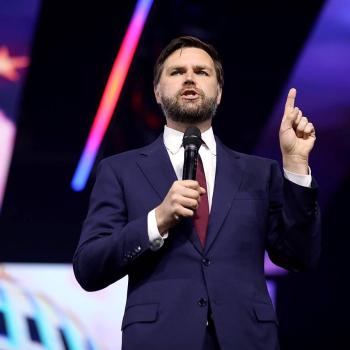IN PART ONE, I began my discussion of gun control by saying that I have some real ambivalence about the issue, based in part on the makeup of my extended family — how it is divided between mostly rural folks on my Mom’s side and Dad’s far more urban side of the family.
As someone who has feet in both camps, I see an awful lot of mythologizing about guns from both the pro- and anti-control sides of the debate. A gun, in and of itself, is intrinsically neither a Destroyer of the Innocent nor a Magical Totem of Manly Power. It is a machine — receiver, firing pin, primer, and so forth, all working together to push a bullet down the barrel at high velocity.
So, I don’t think the problem has merely to do with the existence of guns. I do, however, think that some reasonable controls are necessary and wise.
But for me, there is another factor in play here, a factor not often mentioned in debates over gun control. I’m speaking of the situation on the ground in places like Richmond, California and South Central Los Angeles.
It has been said that a nation can be judged best by how it treats its most vulnerable citizens; I would say that the people in our poorer neighborhoods are our most vulnerable population, and the daily existence of people in my old neighborhood in the Flats in Richmond, California is beset by violence and the desolating grief it causes.
I’ve talked to many people in my old neighborhood and in other places like it, and a story I keep hearing from older people there is how the violence has escalated in the last 30 or 40 years. Gangs have existed in one form or another probably since cities have existed, but within living memory of some old-timers, those gangs settled differences with their fists and — when everyone’s arms eventually grew tired of throwing punches — from negotiations between factions.
The easy availability of guns has destroyed the old order, mostly because guns can bring a terrible (but illusory) finality to conflicts, but also because killing someone raises the stakes for everyone involved. Getting a beating will usually result in humiliation at worst; the prospect of being killed means everyone is fighting not just for abstractions like honor and respect, but for their very survival. It also means that the cycle of retaliation can have no real end.
I think asking, “How do we find a compromise that will be acceptable to both hunters and the professoriate?” is not enough; I think we also need to ask, “What can we do in terms of gun policy to deal with the terrible situation in our poor neighborhoods?”
The answer to that question is very complex, but I think removing guns from the equation is an essential ingredient so we can buy time to de-escalate conflicts and address the deeper issues that afflict our most vulnerable citizens. Removing guns from the equation pretty much means enacting pretty fine-grained controls on gun ownership nationwide, to prevent a “gray-market” in guns purchased in rural areas being transported into violent urban neighborhoods.
It is worth mentioning that there are already gun control measures in place nationwide, and (aside from a few fringe militia types and assorted other gun fetishists) these controls are relatively uncontroversial and supported by a consensus of citizens across the political spectrum.
For example, it is illegal for most people to own a machine gun in the United States, and I and most other people think that’s a very good thing. Machine guns are designed to do one thing: kill large numbers of people or threaten them with death. I can’t think of a good reason for a civilian to have one. No one needs that much firepower for personal defense, and if anyone does then it can reasonably be said that he probably needs to work on his people skills. And no one needs a machine gun for hunting — if you need to spray the woods with hundreds of rounds to get a buck, then I think you need to hit the firing range more often.
More to the point, a machine gun is deliberately designed to very quickly produce casualties on an industrial scale – the prospect of an Adam Lanza (the Sandy Hook gunman) with full-auto weaponry is more than any reasonable person can bear to contemplate.
So there is a consensus that weaponry explicitly designed for military use ought not to be generally available.
More controls beyond that are entirely reasonable, in my view. For example, the only place I’ve ever needed a 30-round magazine was for the M-16 I was issued by the Army. I’ve never needed one for hunting or target shooting. The day I need 30 rounds to get a deer is the day my rifle will become a conversation piece rather than a tool for hunting. I can’t think of any valid reason for ordinary citizens to have a magazine holding more than five rounds.
Another feature of military-grade weaponry is the presence of a flash suppressor at the end of the barrel. The only reason to have a flash suppressor on the end of a barrel is to hide, from other human beings, the muzzle flash when firing your weapon, thus making it less likely that enemy soldiers can locate your firing position. They have no purpose in the context of hunting, because deer (for example) don’t have the visual acuity (nor the understanding) to locate and avoid a reasonably well-concealed hunter. So, I think flash suppressors ought to be prohibited.
More generally, rifles whose telos is causing human casualties ought not to be in the hands of civilians as a matter of course. It should be the case that if you need firearms of that kind, there should be lots of background checks, or licensing, or whatever it takes to make them relatively rare in civilian hands, and if you want one you are required to provide a Darned Good Reason Why, beyond just “it’s shiny and I can wave it around and pretend to be in a movie.”















